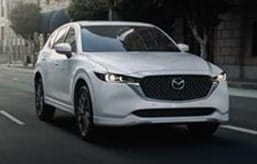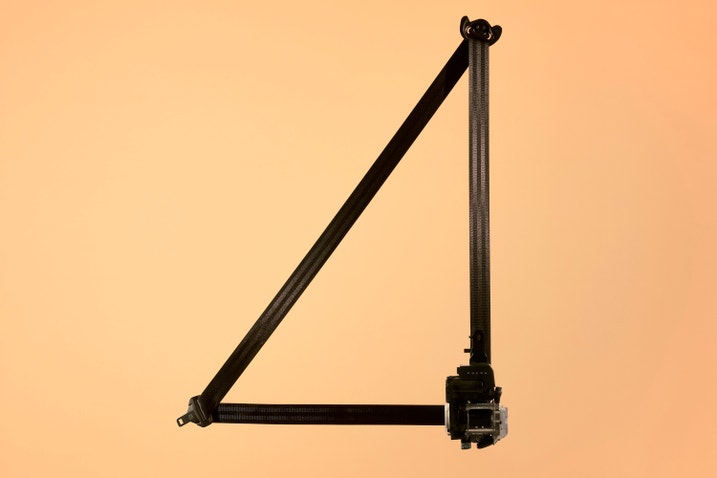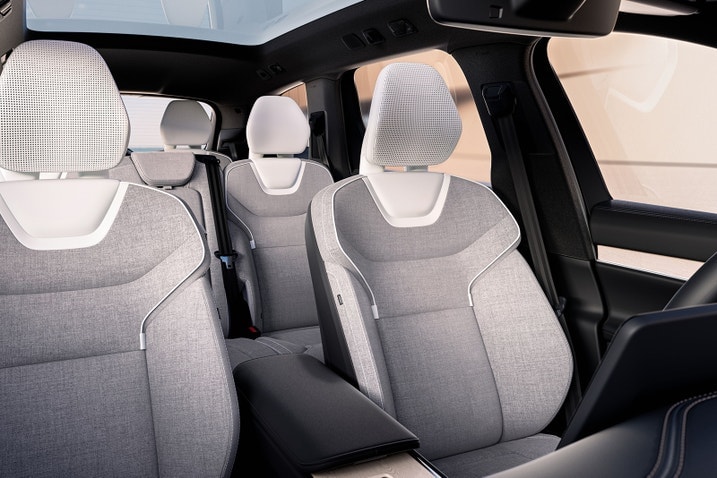- Volvo's new seat belts can automatically adapt to a passenger's unique body size and shape.
- The belts rely on outside data to properly protect occupants during a crash.
- This tech debuts on the electric EX60 SUV in 2026.
Volvo's New Seat Belts Will Adapt to Your Body
The new “multi-adaptive safety belt” adjusts by height, weight and seating position
As a country, the National Highway Traffic Safety Administration says we’re doing a pretty good job at wearing our seat belts — the national use rate was 91.2% in 2024. And it probably helps that the NHTSA has widely publicized its Click It or Ticket campaign encouraging drivers and passengers to buckle up. However, seat belts are not always ideal for every body size and shape, and they aren't always a great fit.
The lap belt and shoulder belt are supposed to be taut against the pelvis and diagonally across the rib cage to protect internal organs; a good fit is highly dependent on height, weight and seat position. Volvo now has an answer to that issue with a new multi-adaptive safety belt that not only adjusts to each passenger's body type but to traffic variations as well.
Volvo — the company that perfected the modern three-point safety belt way back in 1959 — will include these new seat belts on the upcoming all-electric EX60. The Superset technological building blocks that underpin the EX60 are what allow this safety belt tech to work.
Developed through the Volvo Cars Safety Center crash lab in Sweden, the multi-adaptive safety belt harnesses interior and exterior sensors that customize protection. For example, the belt will adjust to keep from crushing the ribs of a smaller passenger in a crash or ramp up the belt load for a larger passenger.
"What is important here is that with our understanding of real-world accidents, we know that every detail matters," says Åsa Haglund, head of Volvo's Safety Center. "With this new technology we can actually take the understanding of what is happening outside of the car and the situation you may end up in, and combine it with the understanding of who is in the car, what is the approximate size and weight of that person, and what is the available distance inside the car. Using this together, we can optimize the protection to help reduce the risk of injury in every individual situation and for every individual person. I think that is always important as we want to protect people in real life."
Current safety belts use load limiters to control how much force the belt applies on the human body during a crash. The multi-adaptive seat belt expands the load-limiting profiles significantly, which means fewer injuries and a more customized approach. And Volvo intends to continue improving and updating the technology via over-the-air software updates.
The Swedish automaker has made a name for itself as a safety-focused manufacturer, and it established a goal in 2007 that no one should be seriously injured or killed in a new Volvo car. Over time, Volvo upped the ante to no collisions at all.
"With Volvo Cars' ambition of always improving safety and by collecting data from the real world since the 1970s, we have the knowledge of how and why people are injured in the real world and a profound understanding of all the different types of accidents that happen out there," Haglund told Edmunds. "We are always on the lookout for ways to improve how we can take care of people and reduce the risk of injuries or accidents altogether. With the multi-adaptive seat belt, the idea comes from basically understanding that every situation and every person is unique, and that we need technology to be able to adapt for that to reduce even more the risk of injuries."
Considering that Volvo shared its patent and design for the three-point safety belt with the world 65 years ago so everyone would be better protected across the board, it would be beneficial if more manufacturers follow Volvo's lead here too.





 by
by  edited by
edited by